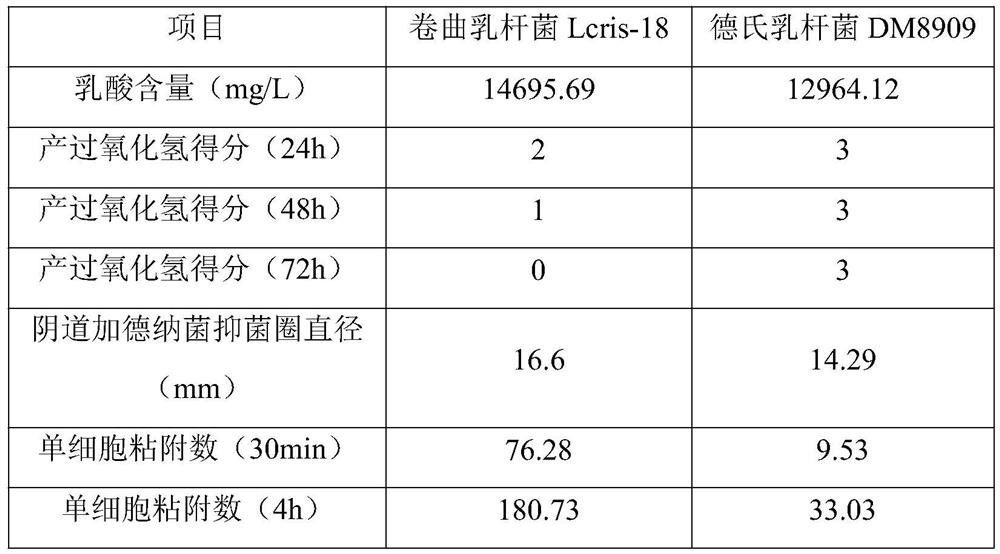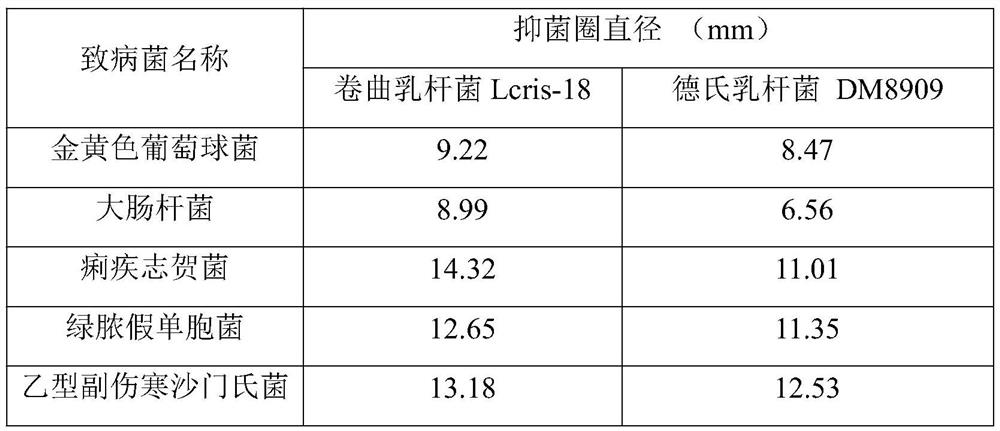Lactobacillus crispatus and application thereof
A technology of Lactobacillus crispatus and bacteria agent, which is applied in the field of microorganisms, can solve the problems of increased dosage and weak adhesion ability, and achieve the effects of inhibiting reproduction, strong ability to produce lactic acid, and excellent antibacterial ability
- Summary
- Abstract
- Description
- Claims
- Application Information
AI Technical Summary
Problems solved by technology
Method used
Image
Examples
Embodiment 1
[0042] The preparation of embodiment 1 bacterial culture medium
[0043] 1. Preparation of MRS Broth:
[0044] Weigh 52.0g of MRS finished medium powder, dissolve it in 1L distilled water; heat to boil, cool to room temperature, add 0.55g cysteine hydrochloride, stir and dissolve, adjust the pH value to 6.5; install a quantitative dispenser and pass N 2 , heated to boiling, boiled for 20 minutes in a slightly boiling state, cooled and dispensed into 10mL anaerobic tubes, sterilized at 118°C for 20 minutes, stored in a cool place and protected from light, and used for later use.
[0045] 2. Preparation of MRS solid medium:
[0046] Weigh 52.0g of MRS finished medium powder and 15.0g of agar powder, dissolve them in 1L of distilled water, heat to boil, add 0.55g of cysteine hydrochloride after boiling, adjust the pH value to 6.5, and extinguish with high temperature and damp heat at 118°C Bacteria for 20 minutes, store in the shade and away from light, and set aside.
[...
Embodiment 2
[0059] Isolation and screening of embodiment 2 Lactobacillus crispatus
[0060] 1. Isolation of Lactobacillus crispatus:
[0061] Vaginal swabs were used to collect vaginal secretion samples from Chinese women aged 20 to 40 who had passed the physical examination; 2 mL of sterile anaerobic PBS buffer solution was placed in the anaerobic tube containing the above cotton swabs, fully Shake and mix well, and use it as the original solution for continuous 10-fold gradient dilution; take 100 μL of the 10,000-fold diluted liquid and spread it on the MRS solid medium, place it in an anaerobic incubator, and cultivate it at 37°C. After culturing for 48 hours, pick A single colony of suspected Lactobacillus was cultured in MRS broth for 24 hours, and a part of the bacterial liquid obtained after culture was transferred to continue the culture, and the other part of the bacterial liquid was extracted from the bacterial DNA; the bacterial 16S rRNA was amplified and sequenced, and the seq...
Embodiment 3
[0093] Example 3 strain identification
[0094] Lactobacillus crispatus Lcris-18 was cultured and collected, genomic DNA was extracted, and the 16SrRNA sequence was amplified by primers 27F and 1492R to obtain a PCR product, which was then sequenced.
[0095] Sequencing results showed that the sequence of the PCR product was shown as SEQ ID No.1, which was identified as coiled-coil after comparison and analysis on the NCBI website (https: / / blast.ncbi.nlm.nih.gov / Blast.cgi) Lactobacillus.
PUM
 Login to View More
Login to View More Abstract
Description
Claims
Application Information
 Login to View More
Login to View More - R&D
- Intellectual Property
- Life Sciences
- Materials
- Tech Scout
- Unparalleled Data Quality
- Higher Quality Content
- 60% Fewer Hallucinations
Browse by: Latest US Patents, China's latest patents, Technical Efficacy Thesaurus, Application Domain, Technology Topic, Popular Technical Reports.
© 2025 PatSnap. All rights reserved.Legal|Privacy policy|Modern Slavery Act Transparency Statement|Sitemap|About US| Contact US: help@patsnap.com


